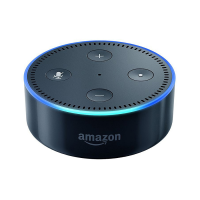The keyword is
Move
and is used with {
arrow
}, its form is as follows:
{place.pos.device} Move {arrow}
Move {place.pos.device} to {arrow}
Example:
The kid's room projector, move up
Move the DVD Player to the right
TV move it to left = TV move left = move the TV to left side
Since this command is often used after the menus appear, so if the last command is issued, it is the same
device, according to the "last command memory", it is no longer necessary to say the name of the device
and it is easy to say with every move down, Moved the menu once down. (You can also repeat the last
command with the repeat command)
Of course, due to the difficulty of moving between options one by one , another option is included in the
above command to move 1 to 5 steps each time the command is issued. This option is used with the words
steps
or
times
and a number from 1-5. Example:
TV-Box move down by 4 steps
TV move to the down side 5 times
Move the TV to down 3 times = move TV down 3 steps = TV move down 3 steps
Volume Command
This command is used in audio and video media. And it can be change the Volume.
The keyword is the
Volume
and is used with {
mode
} or {
number
}, its form is as follows:
{place.pos.device} Volume {mode}
{place.pos.device} Volume to {number}
Volume of {place.pos.device} to {number}
Volume of {place.pos.device} {mode}
Example:
Set the TV volume louder
Change the Player volume to 18
Set the volume of Player to 50
Set volume of TV low = volume TV reduce = TV volume down
mode
options are:
up / high / loud / louder / raise and down / low / lower / reduce and mid /
middle / medium
which are applicable to the type of device to increase and decrease the volume, and
another command that set the volume according to the number The number setting applies only to devices
that have direct access to volume and cannot be used for controllers such as a remote control, so the type of
voice control command should be selected according to the hardware.

